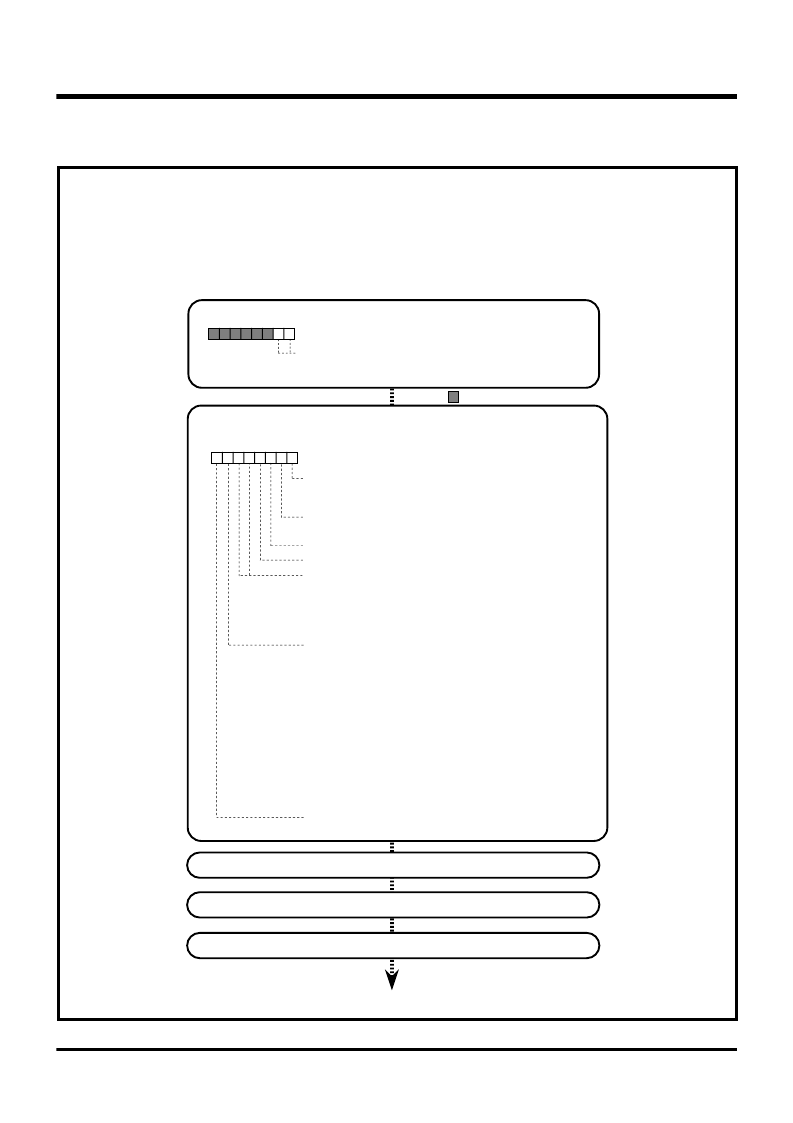- 您現(xiàn)在的位置:買賣IC網(wǎng) > PDF目錄385509 > M38207M8-117HP (Mitsubishi Electric Corporation) 1 watt dc-dc converters PDF資料下載
參數(shù)資料
| 型號: | M38207M8-117HP |
| 廠商: | Mitsubishi Electric Corporation |
| 元件分類: | DC/DC變換器 |
| 英文描述: | 1 watt dc-dc converters |
| 中文描述: | 1瓦的DC - DC轉換器 |
| 文件頁數(shù): | 156/344頁 |
| 文件大小: | 5067K |
| 代理商: | M38207M8-117HP |
第1頁第2頁第3頁第4頁第5頁第6頁第7頁第8頁第9頁第10頁第11頁第12頁第13頁第14頁第15頁第16頁第17頁第18頁第19頁第20頁第21頁第22頁第23頁第24頁第25頁第26頁第27頁第28頁第29頁第30頁第31頁第32頁第33頁第34頁第35頁第36頁第37頁第38頁第39頁第40頁第41頁第42頁第43頁第44頁第45頁第46頁第47頁第48頁第49頁第50頁第51頁第52頁第53頁第54頁第55頁第56頁第57頁第58頁第59頁第60頁第61頁第62頁第63頁第64頁第65頁第66頁第67頁第68頁第69頁第70頁第71頁第72頁第73頁第74頁第75頁第76頁第77頁第78頁第79頁第80頁第81頁第82頁第83頁第84頁第85頁第86頁第87頁第88頁第89頁第90頁第91頁第92頁第93頁第94頁第95頁第96頁第97頁第98頁第99頁第100頁第101頁第102頁第103頁第104頁第105頁第106頁第107頁第108頁第109頁第110頁第111頁第112頁第113頁第114頁第115頁第116頁第117頁第118頁第119頁第120頁第121頁第122頁第123頁第124頁第125頁第126頁第127頁第128頁第129頁第130頁第131頁第132頁第133頁第134頁第135頁第136頁第137頁第138頁第139頁第140頁第141頁第142頁第143頁第144頁第145頁第146頁第147頁第148頁第149頁第150頁第151頁第152頁第153頁第154頁第155頁當前第156頁第157頁第158頁第159頁第160頁第161頁第162頁第163頁第164頁第165頁第166頁第167頁第168頁第169頁第170頁第171頁第172頁第173頁第174頁第175頁第176頁第177頁第178頁第179頁第180頁第181頁第182頁第183頁第184頁第185頁第186頁第187頁第188頁第189頁第190頁第191頁第192頁第193頁第194頁第195頁第196頁第197頁第198頁第199頁第200頁第201頁第202頁第203頁第204頁第205頁第206頁第207頁第208頁第209頁第210頁第211頁第212頁第213頁第214頁第215頁第216頁第217頁第218頁第219頁第220頁第221頁第222頁第223頁第224頁第225頁第226頁第227頁第228頁第229頁第230頁第231頁第232頁第233頁第234頁第235頁第236頁第237頁第238頁第239頁第240頁第241頁第242頁第243頁第244頁第245頁第246頁第247頁第248頁第249頁第250頁第251頁第252頁第253頁第254頁第255頁第256頁第257頁第258頁第259頁第260頁第261頁第262頁第263頁第264頁第265頁第266頁第267頁第268頁第269頁第270頁第271頁第272頁第273頁第274頁第275頁第276頁第277頁第278頁第279頁第280頁第281頁第282頁第283頁第284頁第285頁第286頁第287頁第288頁第289頁第290頁第291頁第292頁第293頁第294頁第295頁第296頁第297頁第298頁第299頁第300頁第301頁第302頁第303頁第304頁第305頁第306頁第307頁第308頁第309頁第310頁第311頁第312頁第313頁第314頁第315頁第316頁第317頁第318頁第319頁第320頁第321頁第322頁第323頁第324頁第325頁第326頁第327頁第328頁第329頁第330頁第331頁第332頁第333頁第334頁第335頁第336頁第337頁第338頁第339頁第340頁第341頁第342頁第343頁第344頁

APPLICATION
2.3 Timer X and timer Y
3820 GROUP USER’S MANUAL
2–70
I
Real time port function
Figure 2.3.27 shows an example of setting registers for using the real time port (referred as RTP)
function.
Fig. 2.3.27 Example of setting registers for using RTP
P6D : Port P6 direction register [Address 0D
16
]
Port P6 direction register
b7
b0
b0, b1 :
Bits corresponding to ports P6
0
(RTP
0
) and P6
1
(RTP
1
)
0 : Input mode
1 : Output mode
Set timer X stop control bit of timer X mode register to “0” to start counting
Set count value (low-order) to timer X (low-order) (TXL) [Address 20
16
]
Set count value (high-order) to timer X (high-order) (TXH) [Address 21
16
]
TXM : Timer X mode register [Address 27
16
]
b0 : Timer X write control bit
0 : Write value in latch and counter
1 : Write value in latch only
b1 : Real time port control bit
1 : Real time port function valid
b2 : P6
0
data for real time port
b3 : P6
1
data for real time port
b5, b4 : Timer X operating mode bits
0 0 : Timer mode
0 1 : Pulse output mode
1 0 : Event counter mode
1 1 : Pulse width measurement mode
b7
1
b0
Setting of timer X mode register
Select RTP or others
b6 : CNTR
0
active edge switch bit
CNTR
0
interrupt
0 : Falling edge active
1 : Rising edge active
Pulse output mode
0 : Start at initial level “H” output
0 : Start at initial level “L” output
Event counter mode
0 : Rising edge active
1 : Falling edge active
Pulse width measurement mode
0 : Measure “H” level width
1 : Measure “L” level width
b7 : Timer X stop control bit
1 : Count stop
[Notes on use]
Notes 1:
After reset release, port P6 direction register is set for the input mode, so pins P6
0
/INT
3
/RTP
0
and P6
1
/RTP
1
operate as ordinary input ports. For using as RTP, be sure to set the
corresponding bits of the port P6 direction register for the output mode.
2:
Change RTP output data as required, for example, by using an interrupt.
3:
Do not change ports P6
0
and P6
1
selected as RTP into input pins during RTP operation.
1
: Nothing is allocated
相關PDF資料 |
PDF描述 |
|---|---|
| M38B43MCH-XXXXFP | SINGLE-CHIP 8-BIT CMOS MICROCOMPUTER |
| M464S6453CKS | PC133/PC100 SODIMM |
| M5-D2 | Adjustable Type Coils |
| M5-F1 | Adjustable Type Coils |
| M5-H1 | Adjustable Type Coils |
相關代理商/技術參數(shù) |
參數(shù)描述 |
|---|---|
| M38207M8-501FP | 制造商:Mitsubishi Electric 功能描述:MicroController, 8-Bit, 80 Pin, Plastic, QFP 制造商:Renesas Electronics Corporation 功能描述:MicroController, 8-Bit, 80 Pin, Plastic, QFP |
| M38207M8-516HP | 制造商:Renesas Electronics Corporation 功能描述:MicroController, 8-Bit, 80 Pin, Plastic, QFP 制造商:VeriFone 功能描述:MicroController, 8-Bit, 80 Pin, Plastic, QFP |
| M38207RFS | 制造商:Renesas Electronics Corporation 功能描述:EMULATION MCU/8BIT CMOS EMULATION CHIP - Bulk |
| M3821 BK001 | 制造商:Alpha Wire 功能描述:CBL 25COND 18AWG BLK 1000' |
| M3821 BK002 | 制造商:Alpha Wire 功能描述:CBL 25COND 18AWG BLK 500' |
發(fā)布緊急采購,3分鐘左右您將得到回復。